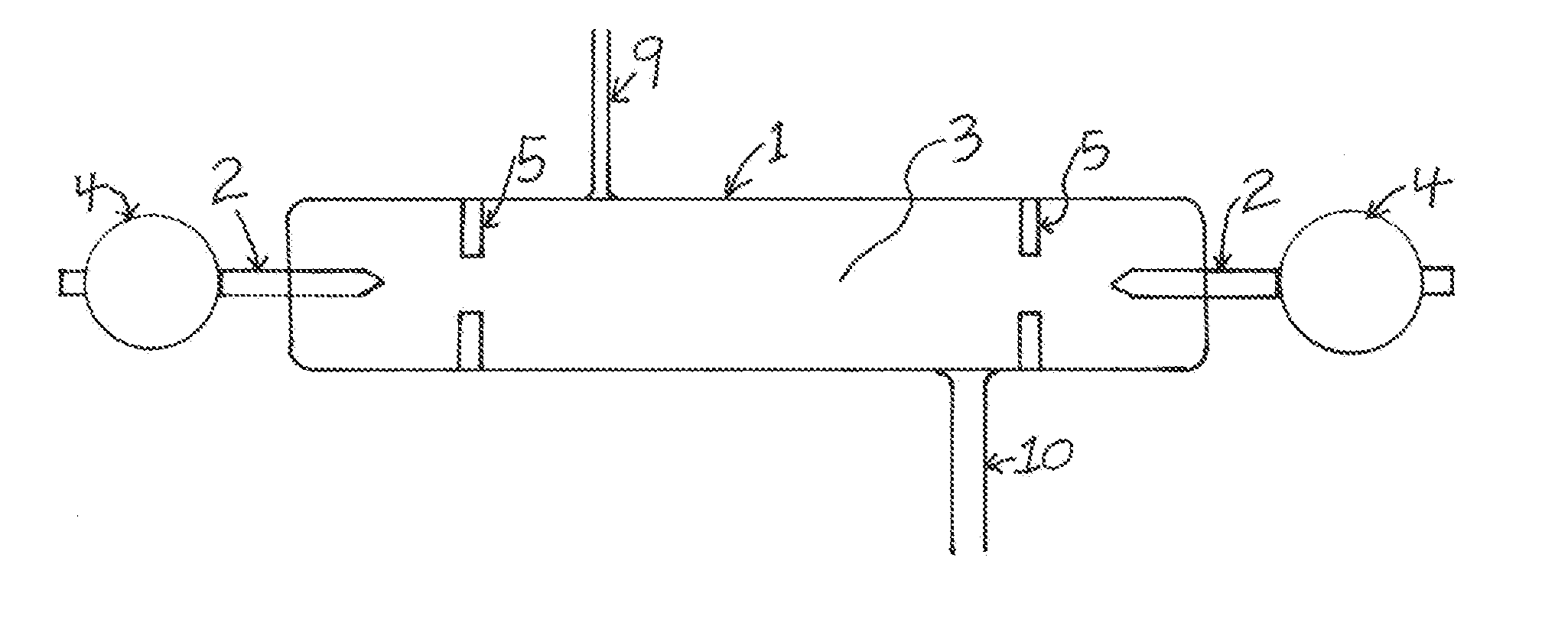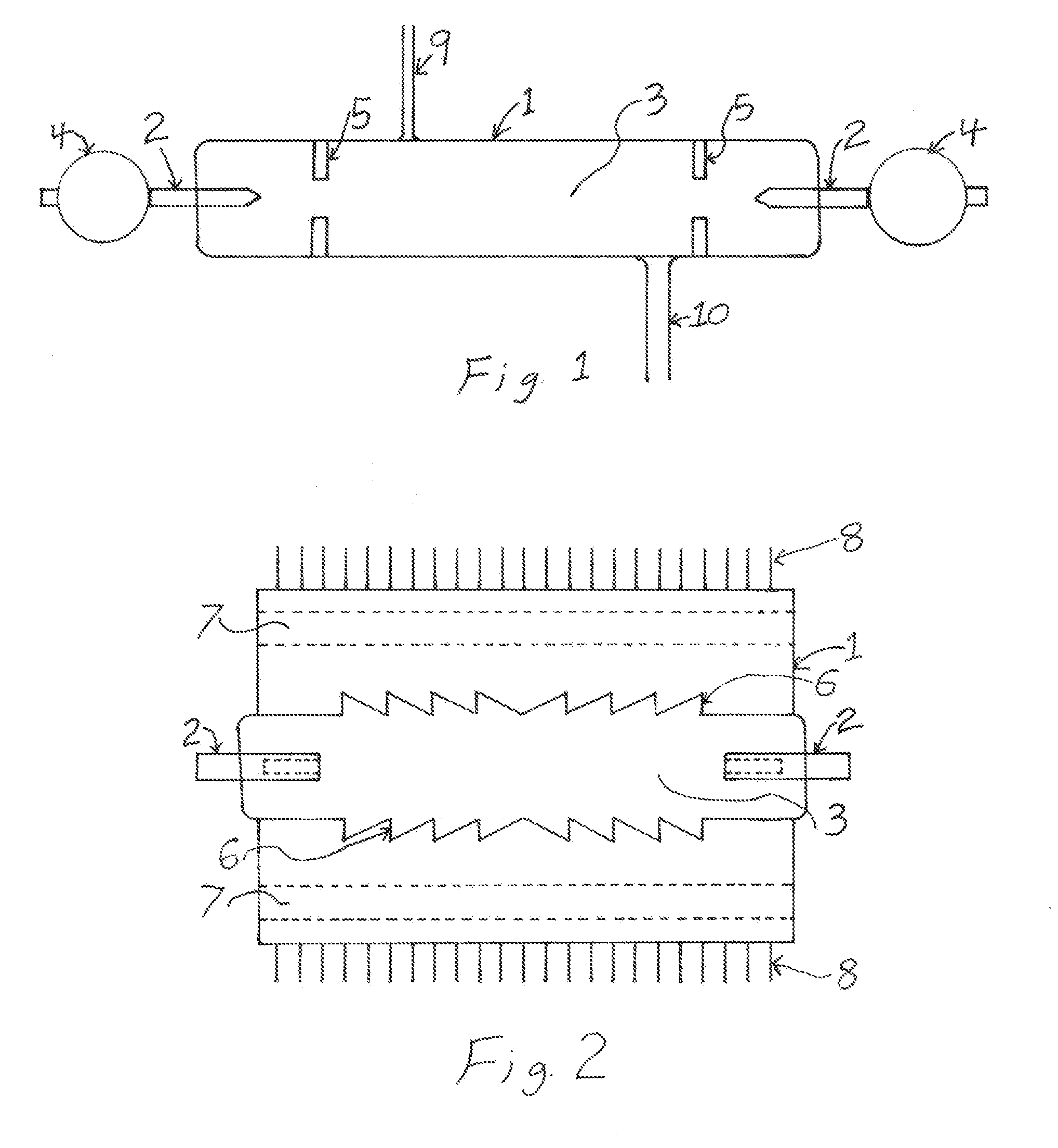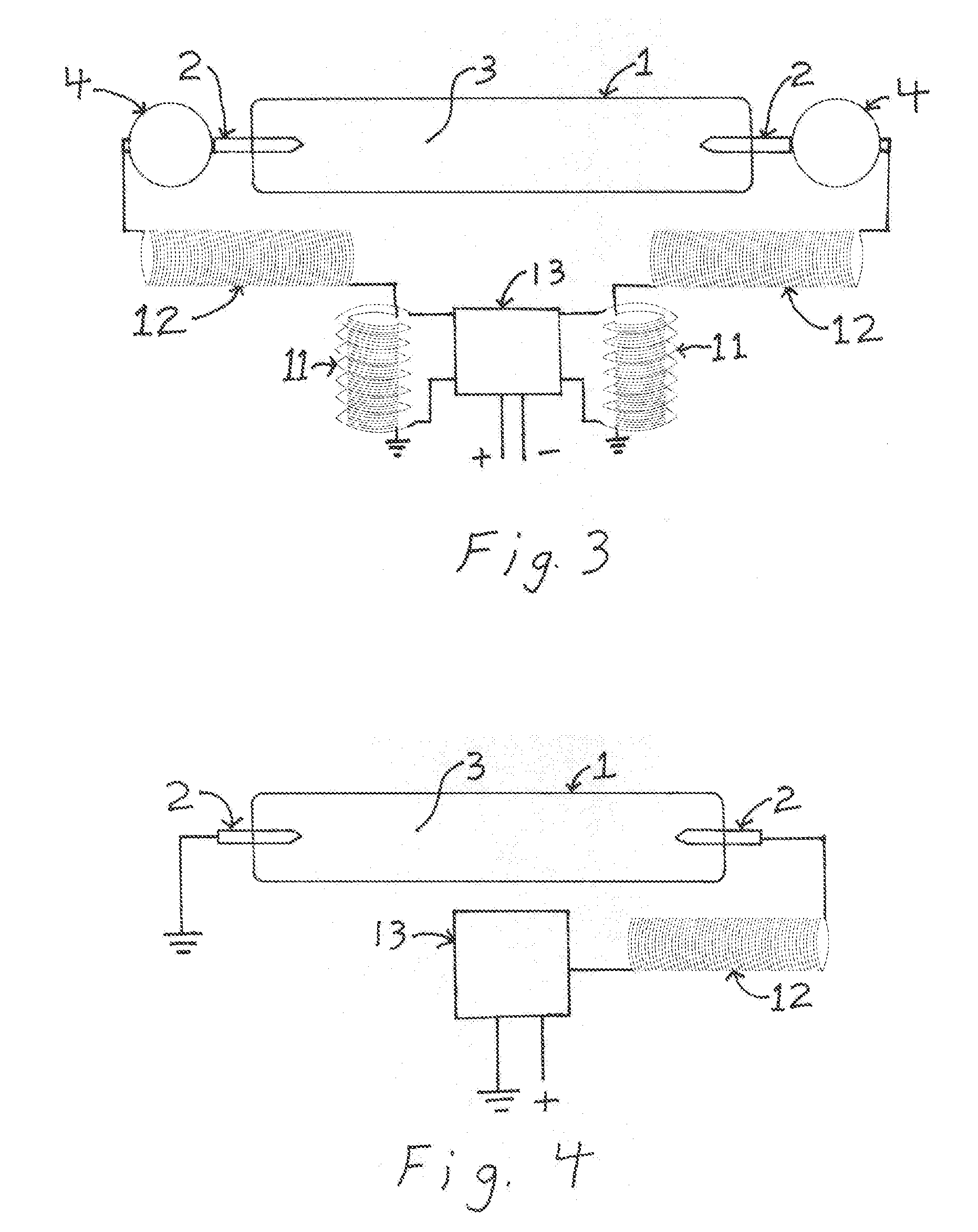Resonant Vacuum Arc Discharge Apparatus for Nuclear Fusion
a vacuum arc discharge and nuclear fusion technology, applied in nuclear reactors, nuclear engineering, greenhouse gas reduction, etc., can solve the problems of requiring leakage to replenish ions lost, limited life of tubes in this embodiment, etc., and achieve high melting point, poor absorber of hydrogen isotopes, and high efficiency of fusion reactions.
- Summary
- Abstract
- Description
- Claims
- Application Information
AI Technical Summary
Benefits of technology
Problems solved by technology
Method used
Image
Examples
Embodiment Construction
[0041]The present inventions now will be described more fully hereinafter with reference to the accompanying drawings, in which some examples of the embodiments of the inventions are shown. Indeed, these inventions may be embodied in many different forms and should not be construed as limited to the embodiments set forth herein; rather, these embodiments are provided by way of example so that this disclosure will satisfy applicable legal requirements. Like numbers refer to like elements throughout.
[0042]The device in accordance with an embodiment of the present invention as illustrated in FIG. 4 consists of a high frequency inverter (13), a resonant coil (12), and a fusion tube comprising of an envelope (1), two electrodes (2) and vapor (3). The high frequency inverter produces alternating current (AC) from a direct current (DC) source. The DC voltage will generally be in the 400 volt to 4000 volt range, with the upper range increasing as high-voltage inverter technology improves. T...
PUM
 Login to View More
Login to View More Abstract
Description
Claims
Application Information
 Login to View More
Login to View More - R&D
- Intellectual Property
- Life Sciences
- Materials
- Tech Scout
- Unparalleled Data Quality
- Higher Quality Content
- 60% Fewer Hallucinations
Browse by: Latest US Patents, China's latest patents, Technical Efficacy Thesaurus, Application Domain, Technology Topic, Popular Technical Reports.
© 2025 PatSnap. All rights reserved.Legal|Privacy policy|Modern Slavery Act Transparency Statement|Sitemap|About US| Contact US: help@patsnap.com



